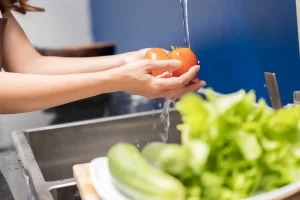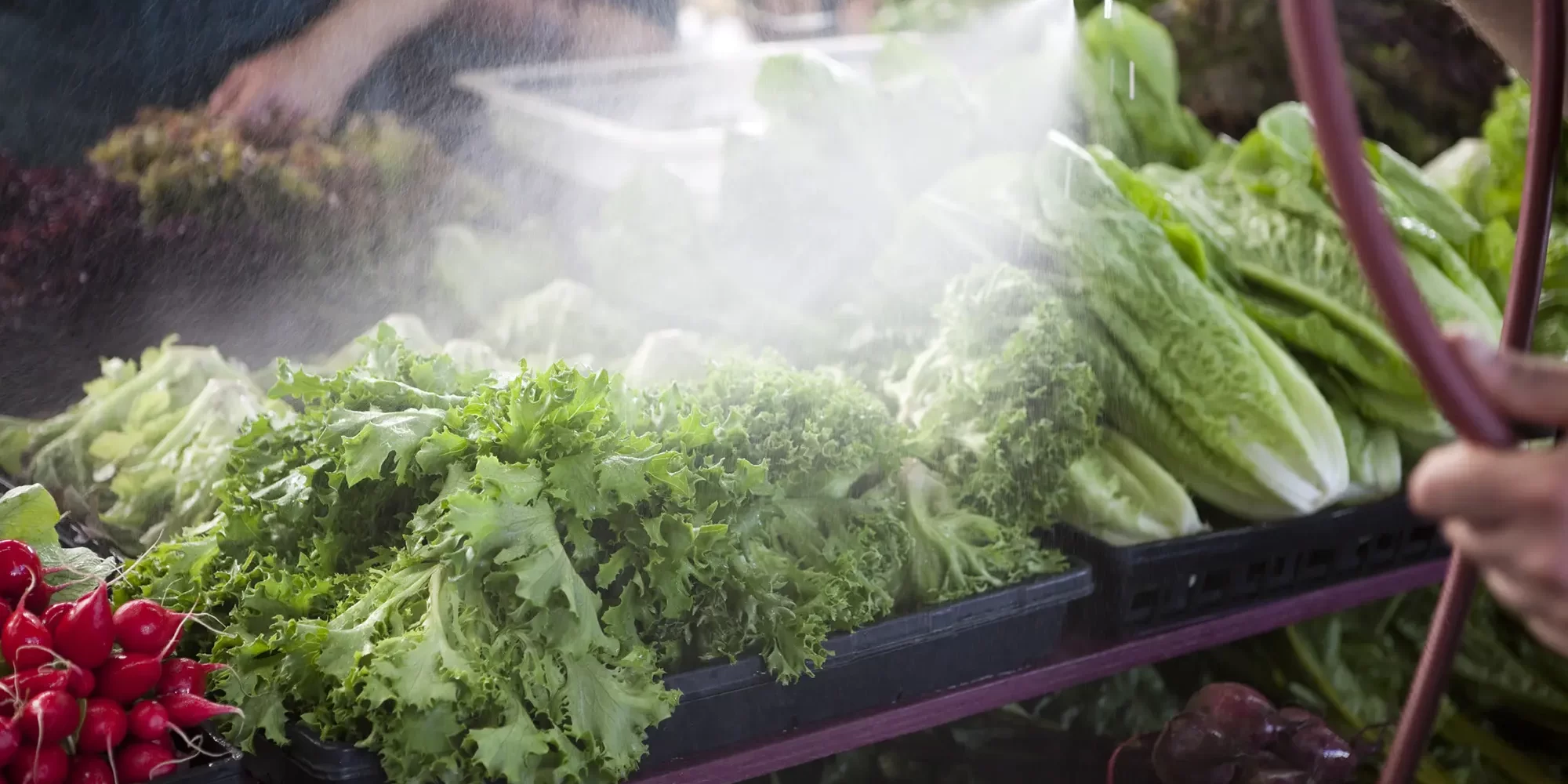To ensure the safety and longevity of produce, the fruit and vegetable industry continually seeks better methods for washing and sanitising.
Chlorine Dioxide (ClO2) has emerged as a revolutionary solution, offering a powerful yet safe alternative to traditional sanitisation methods.
This article explores how ClO2 is transforming the process of fruit and vegetable washing, enhancing both food safety and product quality.
The Need for Effective Washing Techniques
 Fruits and vegetables are susceptible to contamination from various sources, including soil, water, and handling processes. Contaminants can range from harmless dirt to dangerous pathogens like E. coli and Salmonella. Effective washing and sanitising are crucial not only for removing physical impurities but also for ensuring microbial safety, thereby reducing the risk of foodborne illnesses.
Fruits and vegetables are susceptible to contamination from various sources, including soil, water, and handling processes. Contaminants can range from harmless dirt to dangerous pathogens like E. coli and Salmonella. Effective washing and sanitising are crucial not only for removing physical impurities but also for ensuring microbial safety, thereby reducing the risk of foodborne illnesses.
Challenges with Traditional Methods
Traditionally, the washing of fruits and vegetables has relied heavily on chlorine-based solutions. While effective to an extent, these methods have limitations:
- Residue: Chlorine treatments can leave a residual taste and odour on produce, which may affect consumer satisfaction.
- Ineffectiveness Against Some Pathogens: Chlorine’s effectiveness can be reduced in the presence of organic matter and some pathogens can develop resistance.
- Health and Environmental Concerns: The use of chlorine can pose health risks to workers and contribute to environmental pollution due to the formation of harmful by-products.
The Advantages of Chlorine Dioxide
Chlorine Dioxide offers several distinct advantages over traditional methods:
- Superior Efficacy: ClO2 is a potent oxidising agent that effectively kills bacteria, viruses, and fungi, significantly reducing microbial loads without resistance build-up.
- No Harmful Residues: Unlike chlorine, ClO2 does not react with organic compounds to form harmful by-products. This means it leaves no taste or odour, maintaining the natural quality of the produce.
- Safety and Environmental Compatibility: ClO2 is safe to handle and use, with a lower environmental impact compared to traditional chlorine.
Implementing Chlorine Dioxide in Produce Washing
Incorporating ClO2 into existing washing protocols can be straightforward. The implementation process typically involves:
- System Integration: Installing ClO2 dosing systems that can be easily integrated into existing washing lines.
- Concentration Control: Adjusting ClO2 concentrations to ensure efficacy while maintaining safety.
- Monitoring and Compliance: Regularly monitoring ClO2 levels and microbial loads to ensure compliance with safety standards.
Case Studies and Results
Various studies and commercial applications have demonstrated the effectiveness of ClO2 in extending the shelf life and enhancing the safety of fruits and vegetables. For instance, ClO2 has been shown to reduce spoilage organisms and pathogens effectively, resulting in fresher produce and fewer losses during storage and transport.
Chlorine Dioxide is revolutionising the way fruits and vegetables are washed in the food industry. Its superior disinfection capabilities, combined with its safety profile, make it an ideal choice for producers looking to enhance food safety and extend product freshness. Scotmas continues to lead in providing innovative ClO2 solutions, helping the fruit and vegetable industry meet the highest standards of cleanliness and safety. Contact us for more information on how Chlorine Dioxide can transform your produce washing processes.






